Attractive and unique ecommerce website design has always played a key role in a successful online sales and marketing strategy. That’s because beautiful design and excellent user experience can increase the perceived value of your products.
In fact, studies have shown that it takes 50 milliseconds for visitors to decide if they’ll stay on an ecommerce site or not. You get only an instant to impress users, which is why website design is so important for your ecommerce business.
Whether you’re about to create your first online store or you’re thinking about redesigning your current site, this guide is for you. Browse examples of great ecommerce websites, tips for choosing the right ecommerce platform, and advice to get your online business looking its best.
Click here to start selling online now with Kalpvaig
What does great design look like for an ecommerce store?
The best ecommerce websites all have one thing in common: they center the user experience from first visit to post-checkout. There are four main components every ecommerce business should consider when designing a website.
1. Building trust with the customer
When someone visits your ecommerce store or website for the first time, they may not know anything about your brand, the quality of your products, or your commitment to making customers happy. Deals might earn their consideration, but they’ll need to trust you before they actually go through with a purchase.
Customer trust is hardest to earn when you don’t have any customers, so you’ll want to incorporate the following trust indicators as you build your website.
Contact information
Include an email and, if possible, a phone number and a mailing address on a Contact page and in the footer of your site. This type of information, along with an About page, helps potential customers feel they’re buying from a real person.
A return policy
A return policy not only makes it easier for people to send back products that don’t satisfy them, it actually increases sales by lowering shopping cart abandonment and instilling the customer with a sense of confidence and trust that they can send back an item if they need to, without any transaction fees.
Not only does Supergoop have a comprehensive returns page and self-directed returns portal, it also boasts its free returns policy on every product page.

Customer reviews and testimonials
Many ecommerce solutions have app integrations that let you import content into your site. This includes customer photos, your Instagram feed, and even customer reviews. These are signals to potential customers that your brand is trustworthy.
2. Creating a visually compelling experience
Perception is everything when selling your products online. People form their first impression of your ecommerce store in mere milliseconds. With your Shopify store, making that impression count rests largely on high-quality images, consistent branding design, smart use of psychological design, and a clear visual hierarchy.
Let’s dig into some best practices for each of these elements:
- Photography: Product photography is like an ambassador, sharing the promise of your product online. Shoot product photos on a plain background and in many angles. Lifestyle photos are important to show your product in use and in context within an environment. They also reinforce a brand aesthetic.
- Color: Color is one of the most powerful tools you can use to spark interest and emotion on your ecommerce site. It can also be used to draw attention to specific sections of your website and lead the customer journey. Smart use of color can help with accessibility, too.
- Fonts: While the words you write on your ecommerce site share information, it’s the typography that communicates the emotion behind that information. It’s a good idea to stick to two fonts and create a hierarchy between them. Choose one font as your header or title font and another to be your body font.
- Psychological design and visual hierarchy: Using psychological design principles allows you to influence customer decision making and the path of their eye by strategically placing elements, colors, and text on pages.
Outdoor Voices’ homepage features lifestyle images to communicate its brand aesthetic and an aspirational lifestyle. It focuses on limited fonts for a clean look and a clear visual hierarchy.

3. Focusing on responsive design for mobile and desktop
The average daily time spent on a mobile phone in the US is expected to reach 4 hours and 39 minutes by 2024. Luckily, if you’re building your business with Shopify, your store is already responsive. This means the site is user friendly on different devices and screen sizes, whether customers view it on a desktop, smartphone, or tablet.
When choosing an ecommerce website design based on mobile optimization, it’s best to personally test it to see if you’re happy with the transactional flow. If you’re not, there’s a good chance your customers won’t be either.
4. Designing clear navigation
Your website navigation should help customers find your products quickly and easily. Good navigation also helps improve SEO on your site so you get found in search results.
Stick to only a few menu headers in your top-level navigation. Be clear and direct when labeling these headers—this is no time to be clever. Key headers to include in your top-level navigation could include:
- Shop
- About Us
- Bestsellers
- Contact Us
Additional navigation links can go in your footer—the section at the bottom of your website. Return Policy, Terms of Service, and Contact Us pages can be linked here.
10 ecommerce website design examples (and why they work)
The best ecommerce website design examples are those that consider all the elements above for a clean, appealing, user friendly design that communicates the brand and products clearly. Here are a few ecommerce website examples to inspire your own ecommerce design.
1. Thesus
 Sustainable shoe store Thesus (formerly Alice + Whittles) masters trust-building by promising customers a super-easy online shopping experience. It highlights its shipping and returns policy, plus an option to pay in installments if shoppers don’t have the cash upfront. Stellar customer support is highlighted right on the homepage with a handy size chart and returns links.
Sustainable shoe store Thesus (formerly Alice + Whittles) masters trust-building by promising customers a super-easy online shopping experience. It highlights its shipping and returns policy, plus an option to pay in installments if shoppers don’t have the cash upfront. Stellar customer support is highlighted right on the homepage with a handy size chart and returns links.

2. Welly
 Welly positioned itself as the fun first-aid brand with cute convenient packaging and kid-friendly bandage designs. That brand aesthetic is woven through its colorful website, complete with catchy copy and a clear CTA to Shop Now. The homepage is bold and dynamic without being cluttered.
Welly positioned itself as the fun first-aid brand with cute convenient packaging and kid-friendly bandage designs. That brand aesthetic is woven through its colorful website, complete with catchy copy and a clear CTA to Shop Now. The homepage is bold and dynamic without being cluttered.
3. Fred Jourdain
 Artists wanting to sell their art online, should follow Fred Jourdain’s lead. The homepage lets the arts speak for itself, filling most of the page. You can also find interviews on the website and read more about the inner workings of how he creates his art. This content offers value to the customer with a subtle nudge to shop the artist’s works.
Artists wanting to sell their art online, should follow Fred Jourdain’s lead. The homepage lets the arts speak for itself, filling most of the page. You can also find interviews on the website and read more about the inner workings of how he creates his art. This content offers value to the customer with a subtle nudge to shop the artist’s works.
4. MVMT
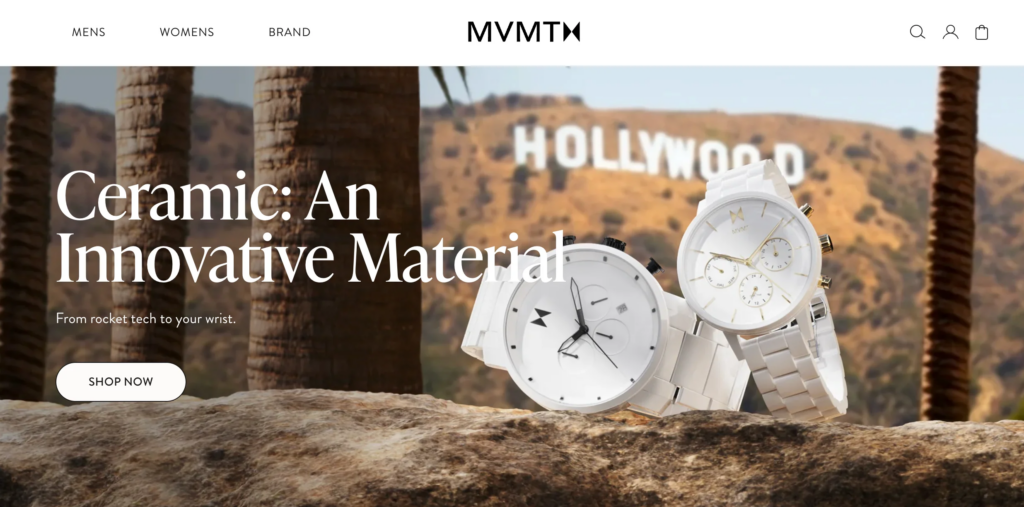
MVMT’s core brand value, “Style shouldn’t break the bank,” is reflected in its website design. It presents sleek, sophisticated colors and styling that showcases watches, eyewear, and jewelry at affordable prices. Plus, it highlights collaborations with designers and provides a Trending Now section on its homepage so people can quickly check the latest designs.
5. Pure Cycles
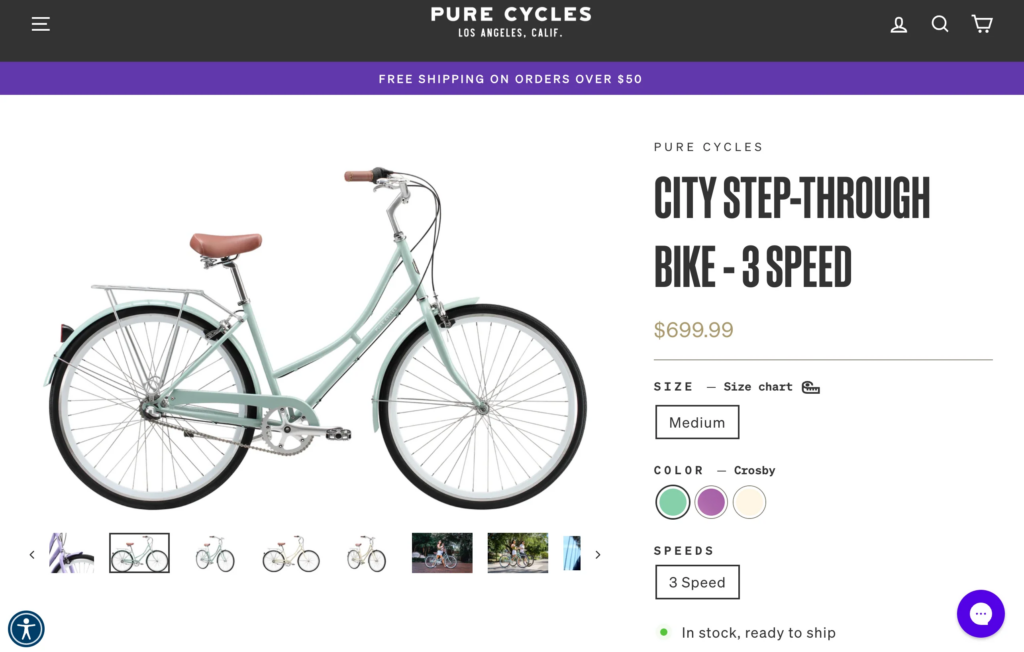
Pure Cycles uses a simple layout that makes it clear why you should care about the brand, and showcases its bestselling bikes. Its product pages also work to give you an in-person experience while shopping online. You can see close-up pictures of specific parts, learn specs, and read other information you need to make an informed buying decision.
6. Verve Coffee Roasters
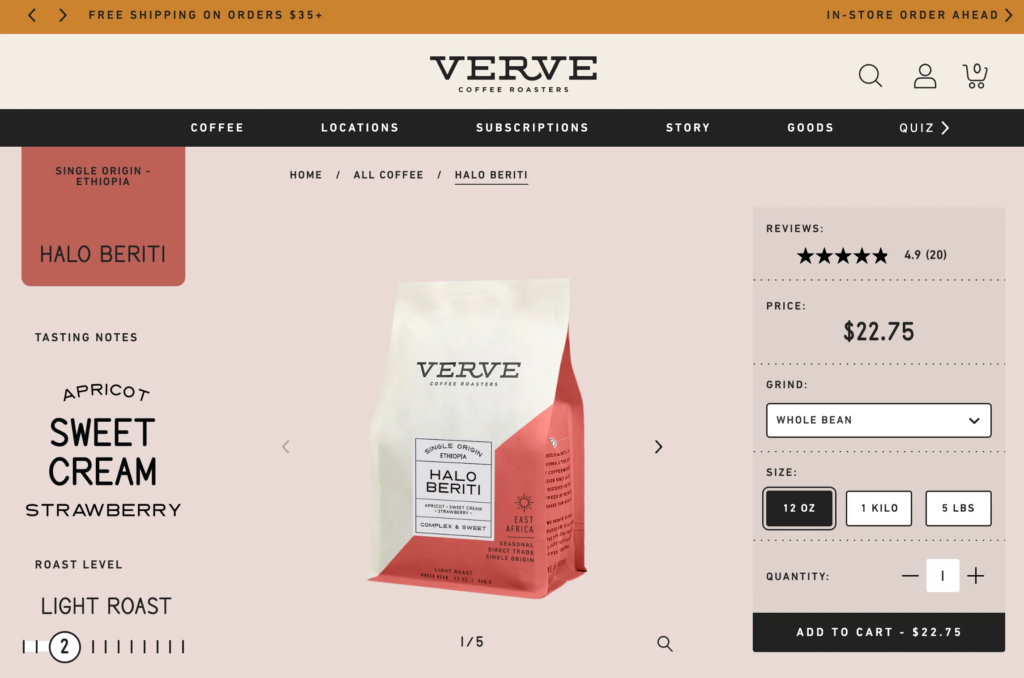
Verve Coffee Roasters uses customer reviews to build trust throughout its ecommerce website.
The online coffee retailer also uses evocative language paired with stylish photography to keep customers on the page. For example, it promises to be “classic and delicious” and delivers on this expectation through evocative word choice, such as “the sweetness of golden marmalade.”
7. Finn

Finn gives pet owners what they’re looking for: big photos of happy dogs that inspire them to pamper their own. The brand’s website also uses simple fonts, lots of contrast, and page hierarchy that directs visitors to Shop Now or Take Quiz. An interactive quiz helps customers feel more confident about their purchases.
8. Hardgraft
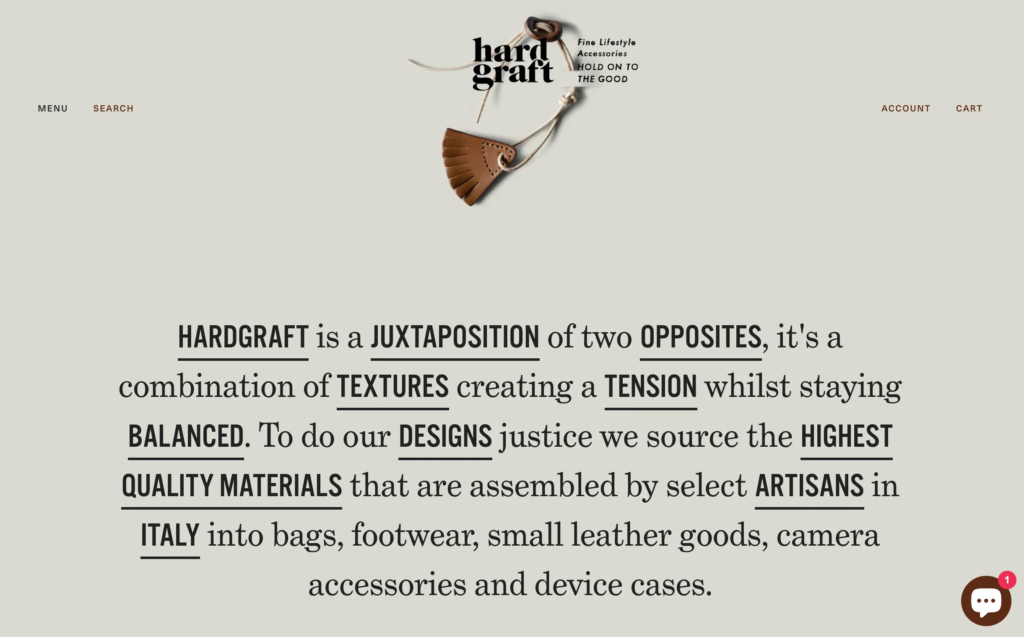
Hardgraft’s ecommerce store builds trust with buyers who want luxury goods and appreciate rugged, earthy aesthetics. Its brand mission and values are on display, telling visitors right away what they’re about. The brand’s product pages are on point, with crisp, bold images that share important product features and value propositions. And, it offers safe, worldwide shipping appealing to a broad international audience.
9. Topo designs
 Outerwear shop Topo Designs uses images that resonate with its target market—young and stylish outdoor enthusiasts—while using unique backgrounds to stand out from other outerwear brands. Another key website design best practice is how the brand communicates sales and incentivizes larger order values with free shipping over a threshold. The brand also offers a newsletter signup perk of a 15% discount, compelling customers to take action.
Outerwear shop Topo Designs uses images that resonate with its target market—young and stylish outdoor enthusiasts—while using unique backgrounds to stand out from other outerwear brands. Another key website design best practice is how the brand communicates sales and incentivizes larger order values with free shipping over a threshold. The brand also offers a newsletter signup perk of a 15% discount, compelling customers to take action.
10. KETNIPZ
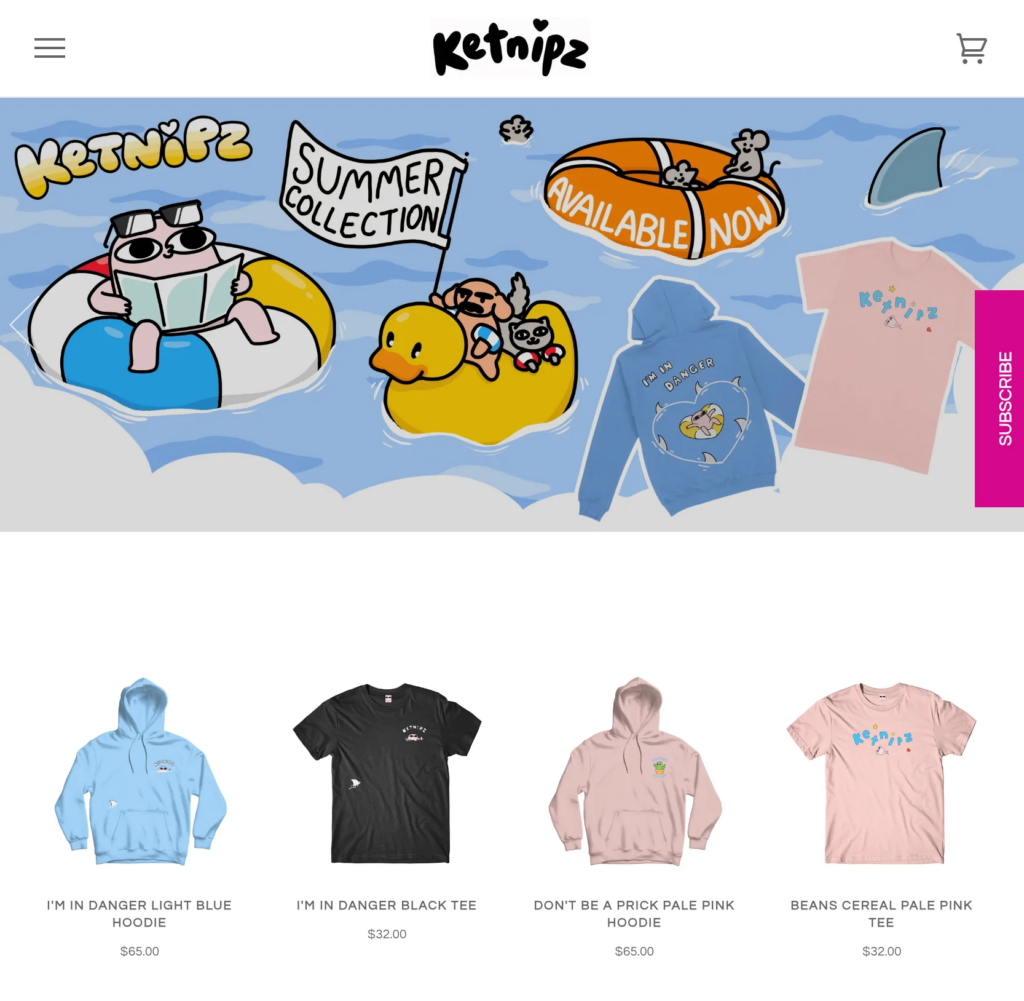
Ketnipz is an Instagram comic turned brand empire created by Harry Hambley. You can find Bean, the main character, on murals around the world, throughout social media, and even tattooed on the bodies of fans. Ketnipz’s website design reflects Bean’s quirky personality, with bright colors, unique fonts, and seasonal updates to align product launches with upcoming holidays.
Design a website for your ecommerce business today
Reach out to us via email at [email protected]
Great ecommerce website design centers the user by being optimized for mobile devices, creating memorable online shopping experiences, and navigating buyers through a clear buying process with a secure checkout. Build trust for your ecommerce business by focusing on these key elements.
When it comes to building a successful ecommerce business, design is one of the most important things business owners and marketers need to consider. After all, your ecommerce store visitors can form an opinion about your site in milliseconds. First impressions matter.
Feature illustration by Rachel Tunstall
